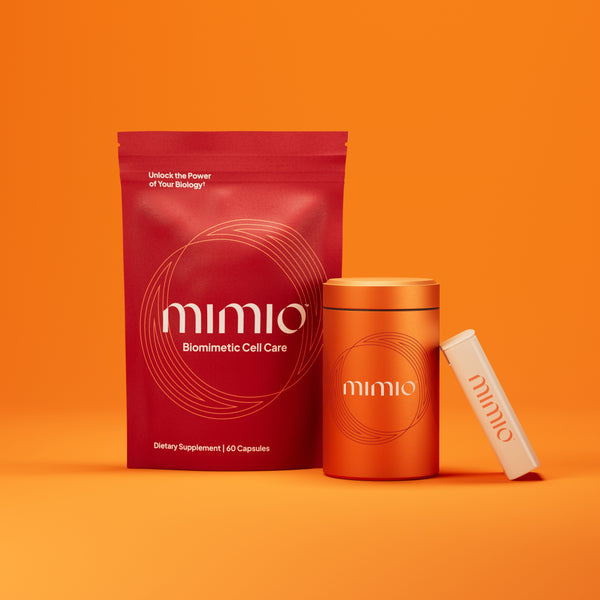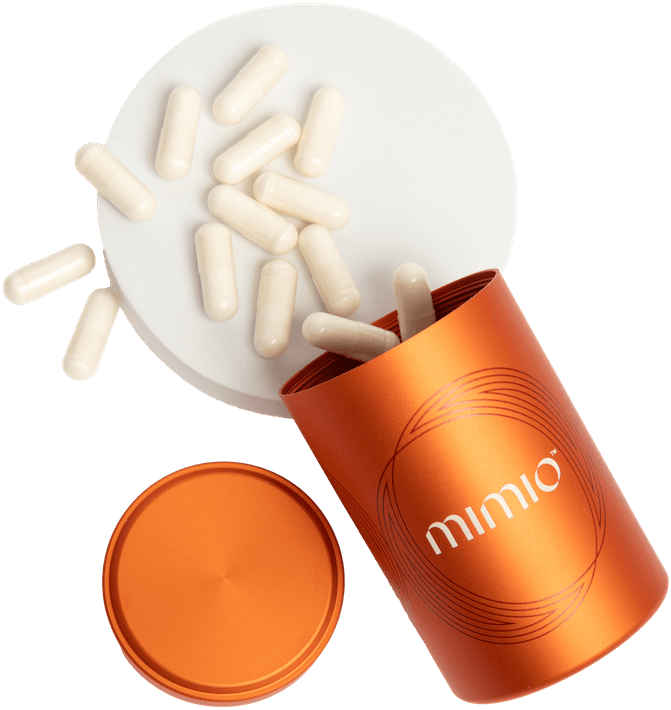Understanding the GLP-1 Hormone
Ever wonder why some days you're ravenously hungry, and other days you couldn't care less about food? Enter GLP1 (Glucagon-like Peptide-1), the hormone that's quietly orchestrating your hunger cues and blood sugar levels behind the scenes. This powerful hormone plays a starring role in how our bodies handle glucose and maintain energy balance. Let’s dive into what GLP1 is, how it works, why GLP1 injectables are on the rise, and why you might want to pay closer attention to this tiny yet mighty hormone.
What is GLP1?
GLP1 is a gut hormone released when we eat, acting as a bridge between our digestive system and brain. You have probably heard a lot about GLP1 in the news recently - popular weightloss injectables mimic the GLP1 hormone to help balance some of the key components in your body linked to weightloss. GLP1 is like your body's built-in traffic controller, ensuring that your blood sugar levels and appetite remain in check. Here’s a quick rundown of its key roles:
- Regulates Blood Sugar: GLP1 helps your body use insulin more effectively, which keeps blood sugar levels stable.
- Controls Appetite: By sending signals to your brain, GLP1 tells you when you’re full, making overeating less tempting.
- Enhances Insulin Secretion: GLP1 boosts insulin production when your blood sugar levels rise, especially after meals.
- Slows Gastric Emptying: It makes food take longer to leave your stomach, helping you feel full longer.
Think of GLP1 as your personal health assistant, constantly working behind the scenes to ensure your metabolic functions run smoothly. But there are a lot of ways to work this behind the scenes system without needing to give yourself a shot.
How GLP1 Impacts Blood Sugar Control
When you eat, GLP1 is released from the intestines into your bloodstream. Its main job? To make sure your blood sugar doesn't spike too high after meals. It achieves this by:
- Stimulating insulin release from the pancreas, which helps cells absorb glucose from the bloodstream.
- Inhibiting glucagon, a hormone that usually raises blood sugar levels by prompting the liver to release stored glucose.
- Delaying stomach emptying, giving your body more time to process sugar without overwhelming it.
In short, GLP1 acts as the body’s glucose guardian, balancing blood sugar levels and preventing the dangerous spikes and dips that can lead to health issues.
The Role of GLP1 in Appetite Regulation
GLP1 doesn’t just stop at blood sugar control; it also plays a key role in appetite regulation. It communicates with the brain to signal satiety, which means you feel full and satisfied, curbing the urge to overeat. Studies have shown that people with higher GLP1 levels tend to consume fewer calories, which can be a game-changer for those looking to manage their weight.
Here’s a quick breakdown of how GLP1 helps regulate your appetite:
- Triggers Satiety Signals: GLP1 sends signals to the brain’s appetite control center, letting you know it’s time to put down the fork.
- Reduces Food Intake: By enhancing feelings of fullness, GLP1 naturally reduces the amount of food you consume.
- Supports Weight Management: This hormone’s ability to curb hunger makes it an ally in weight management and combating obesity.
It’s no wonder GLP1 is a hot topic in the world of health and wellness—its dual role in blood sugar management and appetite control makes it a powerful tool in maintaining overall metabolic health.
GLP1, Fasting, and Longevity: A Surprising Connection
Intermittent fasting and longevity diets often highlight the benefits of allowing your body to reset, and GLP1 plays a role here too. When you fast, your body shifts into a mode that increases GLP1 sensitivity, making your metabolic system even more efficient. This increased sensitivity enhances glucose control and promotes a healthier, longer life.
Here’s how fasting enhances GLP1 action:
- Boosts Insulin Sensitivity: Fasting can increase GLP1's effectiveness in enhancing insulin sensitivity, which is crucial for balanced blood sugar.
- Enhances Appetite Control: When GLP1 works efficiently, fasting becomes easier, as hunger cues are better regulated.
- Supports Cellular Regeneration: GLP1’s influence on cellular metabolism supports fasting’s benefits in enhancing cell regeneration and longevity.
By optimizing GLP1, you’re not just regulating blood sugar—you’re setting the stage for a longer, healthier life.
Boosting GLP1 Naturally: Lifestyle Tips
Want to boost your GLP1 levels naturally, without needing to think about injectables or more aggressive actions? Here are some simple, science-backed tips:
- Eat More Fiber-Rich Foods: Fiber slows digestion, which enhances GLP1 release. Add more whole grains, vegetables, and legumes to your meals.
- Exercise Regularly: Physical activity has been shown to boost GLP1 levels, improving blood sugar control and appetite regulation.
- Prioritize Healthy Fats: Foods rich in omega-3s, like salmon and chia seeds, can stimulate GLP1 production.
- Stay Hydrated: Dehydration can mess with your metabolism, so keep your water intake high to support GLP1 function.
- Try Intermittent Fasting: As mentioned, fasting can enhance GLP1 sensitivity, amplifying its effects on glucose and appetite regulation.
By making these small lifestyle tweaks, you can naturally elevate your GLP1 levels and reap the metabolic benefits.
Mimio and GLP1: A Synergistic Boost for Your Metabolism
If you’re looking to further enhance your body’s GLP1 activity, supplements like Mimio’s Biomimetic Cell Care could offer a powerful boost. Mimio’s unique formula is designed to mimic the effects of fasting, supporting natural GLP1 activity even when you’re not skipping meals. It’s like having a biohack for better metabolic health right on your countertop.
- Supports Blood Sugar Balance: Mimio’s ingredients work to support insulin sensitivity, aligning perfectly with GLP1’s functions.
- Enhances Appetite Control: By mimicking fasting’s effects, Mimio helps maintain steady GLP1 activity, which is great for managing hunger and food intake.
- Optimizes Cellular Health: Mimio’s formulation supports the same pathways that GLP1 enhances, making it an excellent addition to a health optimization routine.
For those looking to maximize their metabolic potential, Mimio offers a scientifically-backed way to harness the benefits of GLP1 and take control of your health.
Conclusion
GLP1 may be small, but its impact on your health is anything but. From regulating blood sugar to controlling appetite, GLP1 is a crucial player in your metabolic health. By understanding how this hormone works and making simple lifestyle changes, you can naturally boost GLP1 levels and support your overall well-being. GLP1 injectable popularity is on the rise, but these may not be attainable for some folks for any number of reasons. If you’re looking for an extra edge, Mimio’s Biomimetic Cell Care is here to help you elevate your health game even further.
Remember, your metabolism is yours to control—why not make it work in your favor?



